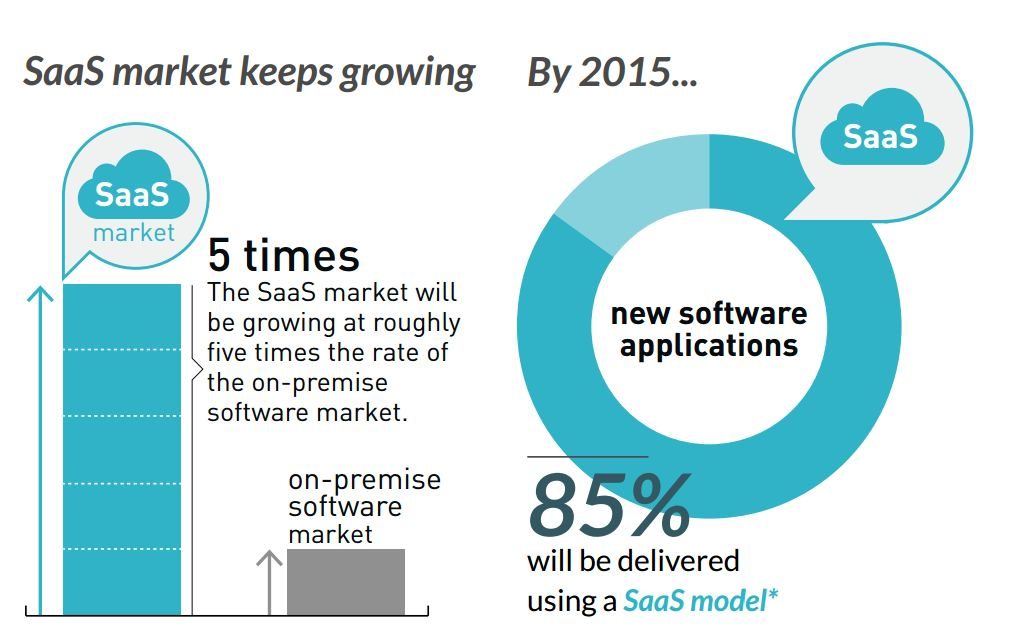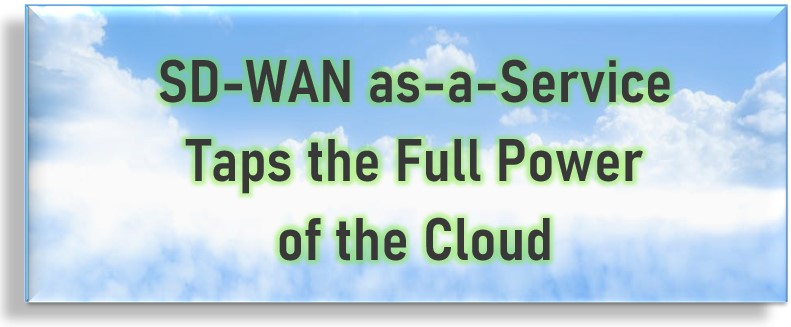I bought a new phone over the weekend. The battery in my old phone was not keeping a charge for very long and it was starting to impact my ability to work during the day and keep in touch with friends and family after work. Who wants to carry a charging cable around all the time, looking for a power outlet that may not be there? Even though there are a lot of great phones available and both manufacturers and carriers go to great lengths to win new business, I am sorry to report that I purchased a brand new version of the same phone I was already carrying. Except for the defective battery, I had no complaints and, frankly, I have better things to do with my time than learn a new mobile operating system every couple of years.

Cloud services are growing in popularity.
Image courtesy of Inc 42.
I removed the SIM card from my old phone and added it to the new phone, which I then powered on. I downloaded a few applications and signed into each with a user name and password. Approximately five minutes after starting the process, my new phone was configured and set up exactly like my old phone. Calendars, contacts, and to-do lists all appeared exactly as I had left them. Notes about client meetings and references for the posts you find here were a click away. The maps application included a list of my most frequented stops. Even the photos from my own phone magically appeared on the new phone. The ease of transition was staggering.
For business operations, this sea change is every bit as evident. An entire market of Infrastructure as a Service (IaaS) and Software as a Service (SaaS) offerings mean that enterprise networks, appliances, tools, and applications are available for organizations of all sizes. From human resources to contact management, from diagnostic tools to patient records, there is almost assuredly a cloud-based service for any task or activity critical to your business. These applications and appliances make it possible for an organization to operate from almost anywhere without sacrificing security and reliability.
As you consider moving more and more of your business operations to the cloud via SaaS and IaaS offerings, you must consider a number of factors. CIOs and IT professionals know that things like uptime, security, and stability are critical when choosing cloud applications for business. Here are four oft-overlooked – but important – factors to consider.
- Longevity: The rush to purchase hot new technology isn’t limited to consumer offerings like WhatsApp and Instagram. The enterprise space is full of consolidation, as well. When considering cloud services or applications, you must consider what happens if (or when) the service you choose is acquired by a larger entity or, even worse, goes out of business entirely. In many cases, the application is left unsupported or shuttered altogether. Sure, you may be given a few weeks or months to find an alternate application and migrate your data, but do you really want to go through the headache of choosing a new application and retraining your team every couple of years? Our suggestion would be to consider cloud services that are mature in terms of market size. Not every application needs to be powered by Microsoft, Google, or Oracle, but choosing an application supported by three engineers in a business park is a risky idea.
- Compatibility: Not every cloud application plays well with other applications you may be using. For example, some cloud-based recruiting software solutions require Microsoft Outlook for integrated email correspondence. What if your company doesn’t use Outlook? Some medical records software requires Adobe for PDF and OCR capability. Is that an added cost you’re willing to take on? Our suggestion would be to outline the entire workflow you would like to put in place before purchasing any cloud services. Make sure that each part of the workflow is accounted for and compatible with the other pieces before committing to any part of a solution.
- Scaleability: Most cloud services offer a variety of packages and options for customers. While tiered pricing can be advantageous in many situations, take pen to paper to make sure that your cost benefit doesn’t disappear when your organization starts to grow. For example, an enterprise-grade contact management tool that costs $25 per month per user doesn’t seem so bad when you employ four people. But what about when your company grows to forty people and that same CRM is costing $1,000 each month? Even if you think that your company is a long way from having this problem, migrating from one tool to another can be a pain. Take care to ensure that your continued success and growth doesn’t inadvertently create a financial burden.
- Business Intelligence: When considering IaaS or SaaS offerings, it can be easy to get wrapped up in features and promised productivity enhancements. However, the data passing through your business is a competitive advantage that you absolutely must tap into if you hope to grow and succeed long-term. Most SaaS and IaaS offerings can be demoed or tried out before purchase. When doing so, pay special attention to the built-in capabilities of the offering when it comes to compiling and analyzing data. For example, bookkeeping software should allow for reporting in just a few mouse clicks that shows which customers or regions are most profitable.

A simple breakdown of different cloud services.
Image courtesy of Silverlight Hack.
Cloud computing and always-available data mean increased flexibility for connected individuals everywhere. IaaS and SaaS solutions for small businesses mean that no technology is out of reach for any sized organization. The ability to save and access files and data from almost anywhere is a powerful tool. Just as significant, the flexibility and integration of this data into web-based tools and applications means that employees and team members have the tools needed to do their jobs well even if they aren’t sitting behind a desk working on an assigned computer. Considering the alternatives, the case for the cloud is easy to make. That said, make sure you consider more than just features and cost when evaluating IaaS and SaaS offerings. Often, the little things you are likely to overlook can come back to haunt you at a later date. Click here to lean how Mosaic NetworX can help you design a solution that moves your organization to the leading edge of cloud computing!




